

In order to reinforce its control of the Mongolian region and the defence of the country's northern frontier, the Qing government built the Mulan Hunting Ground, which is over 350 km from Beijing. Each year the Emperor would bring his ministers and his eight Standard Royal troops, along with his family and concubines, to hunt at Mulan. To accommodate this entourage of several thousand people, 21 temporary palaces were built, the Mountain Resort (also known as the Rehe Temporary Imperial Palace) and its Outlying Temples were one of them.
In terms of the general layout, architectural styles, construction techniques, decoration details and garden landscape, the Mountain resort and its Outlying Temples represent the broad exchange and convergence between Han culture and the ethnic minority cultures, Confucianism and Buddhism, Taoism, also the architectural styles between China's north and south.
The Mountain Resort can be divided into four independent yet inseparable parts: the Palace area, the lake area, the plain area and the mountain area. The resort's most prominent landscape feature is that the mountains are sitting within the gardens, and the gardens are circled by the mountains. The massive project began in 1703 and ended in 1792, covering a span of 89 years. Although most buildings were damaged to ruins with the demise of the Qing Dynasty, it still remains China's biggest existent ancient imperial gardens and temple complex. The Mountain Resort and its Outlying Temples were inscribed on the World Heritage List in 1994.
After the establishment of the People's Republic of China, three decades of renovation have saved dozens of the resort's heritage sites. Some of the sites were reconstructed, while a significant proportion has maintained their original appearance, enabling visitors to appreciate the true value of the cultural and historical landscape.
 |
 China-Russia "Joint Sea-2013" drill concludes
China-Russia "Joint Sea-2013" drill concludes Chinese, Russian naval forces in joint escort drill
Chinese, Russian naval forces in joint escort drill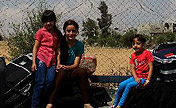 Egypt reopens main crossing point of Gaza Strip
Egypt reopens main crossing point of Gaza Strip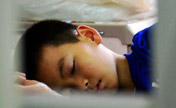 Lao gov't vows to combat spread of dengue fever
Lao gov't vows to combat spread of dengue fever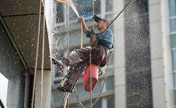 Hard working people under the sweltering sun
Hard working people under the sweltering sun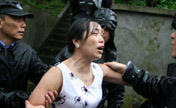 Rain-triggered landslide hits SW China’s Sichuan
Rain-triggered landslide hits SW China’s Sichuan 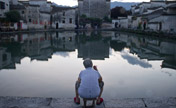 China's weekly story (2013.6.28-7.5)
China's weekly story (2013.6.28-7.5) Marriage made in fairs by pushy Chinese parents
Marriage made in fairs by pushy Chinese parents 2013 Miss World China Pageant Finals
2013 Miss World China Pageant Finals Children get the chance to become their idols
Children get the chance to become their idols British couple travel with vintage car
British couple travel with vintage car 9th CCG Expo opens in Shanghai
9th CCG Expo opens in Shanghai  Germany's largest solar firm files for bankruptcy
Germany's largest solar firm files for bankruptcy A decade for home mortgage slaves
A decade for home mortgage slaves Tibetan farmers pray for good harvests
Tibetan farmers pray for good harvests